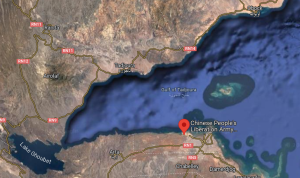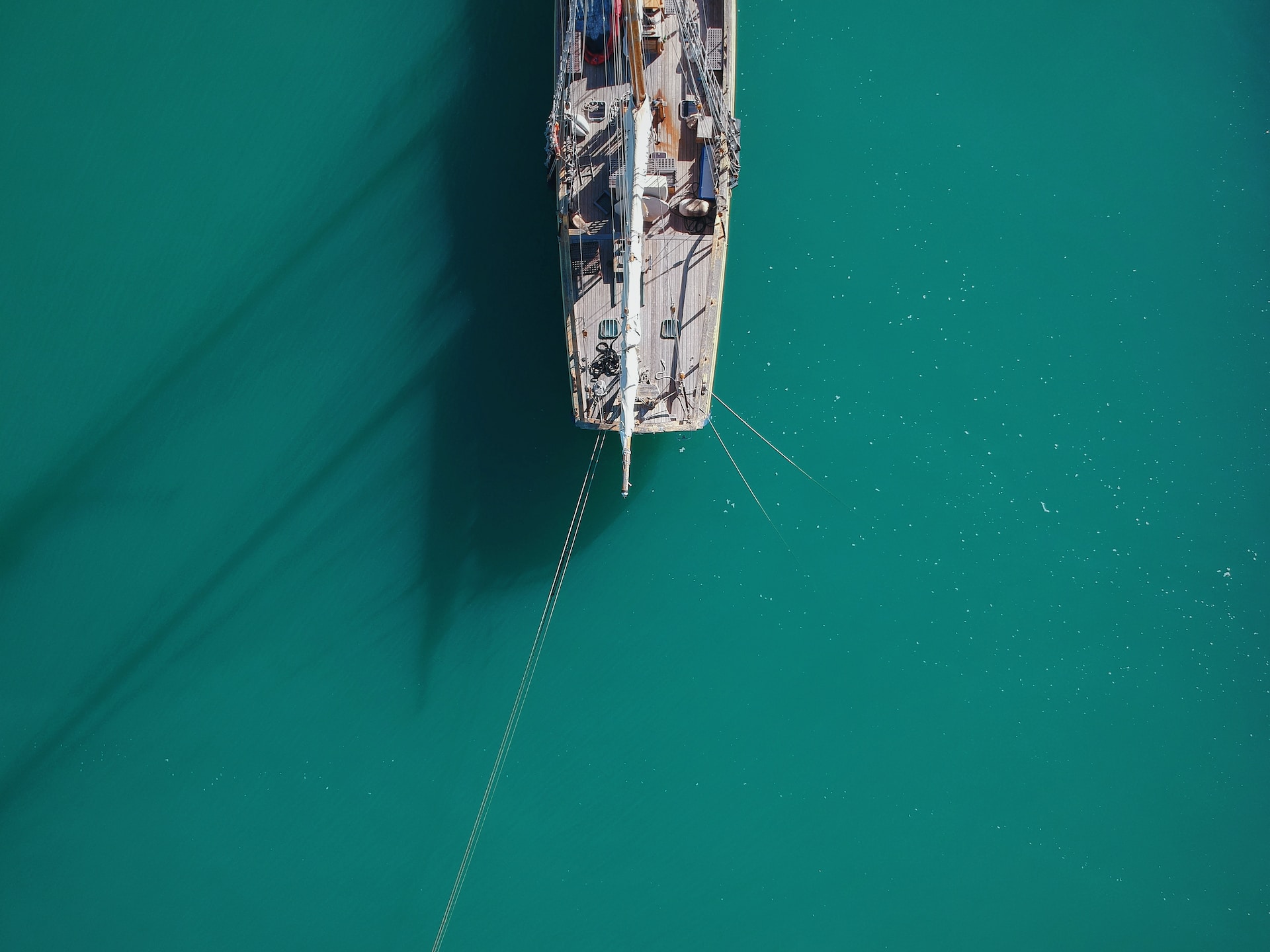As part of its strategy for future economic growth, China has placed increased emphasis on the expansion of its shipbuilding programs, merchant fleet, and port facilities, recognizing the crucial role of sea power in this endeavor.
In November 2022, the Pentagon published its annual China Military Power Report and surprised many with the news that the Chinese People’s Liberation Army Navy (PLAN) surpassed the U.S. Navy in fleet size in 2020. Their fleet, numbering roughly 340 warships, was expected to grow to 400 very shortly. This stunning achievement is part of a larger Chinese effort to grow their economy by ensuring the smooth flow of goods and services from Chinese ports to the world. In addition to an increase in warships, the Chinese have significantly increased the size and capability of their commercial and military shipbuilding programs, their merchant fleet, and foreign and domestic port facilities owned or operated by Chinese companies. This significant effort has taken place because Beijing increasingly links China’s future economic development with sea power. Influential Chinese strategist Xiao Tianliang in the “Science of Military Strategy” wrote, “The seas and oceans bear on the enduring peace, lasting stability and sustainable development of China… it is necessary for China to develop a modern maritime military forces structure commensurate with its national security and development interests.” Secure Sea Lines of Communication (SLOC) are the critical lifelines of China’s future economic development.
The Chinese Government announced a strategy to achieve this goal in 2015. Entitled the “Near Seas Defense and Far Seas Protection” strategy, it lays out two missions for the PLAN. The first is to safeguard China from foreign threats and the second is to protect its overseas interests. This two-part strategy maintains China’s long-term commitment to protecting its homeland from attack and asserting national sovereignty claims in the Pacific. It also adds a new emphasis on safeguarding China’s economic development and strategic interest by protecting vital SLOCs and engaging in a variety of security missions near and far from China, as outlined in the China Maritime Report No. 13 by Jennifer Rice (Rice) and Eric Robb (Robb).

People’s Liberation Army Navy Flag
The first part of this strategy, Near Seas Defense is a regional, defensive strategy focused on maintaining China’s territorial sovereignty and maintaining their maritime rights and interests. According to Chinese naval strategists, the goal is to fight and win wars in the near seas around China including the Yellow Sea, East, and South China Seas, and the areas around the first island chain. As Rice and Robb argue, much of their current warship production is focused on ships that are small, agile, and lethal which can operate optimally in these shallower, more constrained, seas.
The second part of the new strategy is Far Seas Protection, a new and quite broad addition to China’s naval strategy. Since PLAN sources do not give precise definitions of what “far seas” encompasses, Western analysts have speculated that it could be global in scope, at least in aspiration. Beijing has encouraged the PLAN to go global and participate in a range of regional exercises and security missions. China’s 2015 Defense White Paper requires the PLAN to “protect the security of strategic SLOCs and overseas interests and participate in international maritime cooperation,” themes that are reiterated in the 2019 Defense White Paper. Both peacetime and wartime missions are associated with these requirements. During peacetime, the PLAN is tasked to conduct a variety of “non-war military operations” that serve Beijing’s political, economic, or military objectives. Rice and Robb assessed these activities as cooperative as they include peacekeeping operations, providing humanitarian assistance and disaster relief, evacuating Chinese citizens from danger, and engaging in joint exercises and naval diplomacy. The most prominent and enduring of these missions is the PLAN’s counterpiracy operations in the Gulf of Aden to secure one of China’s Indian Ocean SLOCs. The PLAN initiated these operations in December 2008 and has continued them to this day, with the mission aided by one of their first logistics support bases outside of China in Djibouti.

The location of China’s logistical support base in Djibouti
The peacetime nature of these activities can obscure Far Seas Protection’s wartime applications as the concept encourages offensive operations during wartime, despite the defensive strategy its name implies. Chinese Naval strategists have pointed out that in wartime, the SLOC protection mission becomes even more critical because of the potential for a modern adversary navy to interdict China’s seaborne trade. China does not control the straits and transit lanes its economy depends on and “once a crisis or war at sea occurs, China’s sea transport could be cut off”. The People’s Liberation Army plans to overcome this strategic vulnerability by developing capabilities to counter enemy interdiction. Rice and Robb analyzed the move of one Chinese think tank that urged PLAN naval forces to “control key strategic channels” far from China, whereas another advocated employing strategic “fist” forces formed around aircraft carriers. The authors wrote: “If Beijing adopts these recommendations, we should expect China will continue to emphasize the development of sea control and power projection capabilities in the years ahead.” Worth noting, in September 2012, China commissioned the Liaoning, an ex-Soviet aircraft carrier acquired from Ukraine named the Varyag, and began the complex learning process of conducting flight operations at sea. They then commissioned the domestically produced Shandong in 2019, modeled after the Liaoning, after completing initial sea trials in 2018. As suggested in an article by Commander Jake Wilson from the United States Navy, “construction of a third, and likely more advanced, aircraft carrier—the Type 002—is presently underway at the Jiangnan Shipyard with an unknown estimated date of completion.”
Positioning warships in the Far Seas for extended periods is no easy task. Naval experts say the deployment of individual ships or fleets far from home bases is a tremendously resource-intensive process. Even with recently built ocean-going logistics and refueling ships, the need for friendly ports for larger resupply, overhaul, and maintenance is critical, with China having only a small number of overseas support bases for its fleet. The first is in Djibouti (Gulf of Aden) and it is reportedly working on agreements for ports in the United Arab Emirates (Persian Gulf), Equatorial Guinea (Gulf of Guinea), and other locations in Africa and Latin America. To supplement this, they have developed a very robust commercial sector focused on port management abroad. Though the use of these facilities by PLAN forces in times of active conflict might be limited by location and geopolitical realities, they are a very significant force multiplier for logistics-limited ships and crews before active conflict begins. This point was made by the 16 August 2019 call of the PLAN destroyer Xi’an to the port of Alexandria, Egypt, which was returning to China after a visit to St. Petersburg, Russia. It arrived and was taken into a shipyard operated and majority-owned by two Chinese companies and had a four-day refit and resupply, before passing through the Suez Canal and returning home. As Isaac B. Kardon (Kardon) and Wendy Leutert (Leutert) suggest in Pier Competitor: China’s Power Position in Global Ports, the PLAN opted to use the Chinese commercial port facilities in Alexandria rather than their new support base on the other end of the Suez Canal in Djibouti. Perhaps this was a proof-of-concept exercise for the use of Chinese-operated or owned commercial port facilities for resupply and refitting rather than relying on their limited number of support bases.
Doctrine, warships, ports, and bases, China’s incredible transformation into a major global sea power in a matter of a few years is striking.
Chinese commercial penetration of foreign port management and ownership is quite significant. An analysis in 2022 found at least ninety-six ports in fifty-three countries owned or operated by a Chinese commercial entity. Nearly half of these facilities (forty-five of ninety-six) are located along the maritime superhighway which connects China to critical natural resources, major markets, and high-technology imports. This SLOC runs from coastal China through the South China Sea and Malacca Straits, across the northern Indian Ocean, then splits into two routes. One route runs north through the Arabian Sea and into the Strait of Hormuz and the Persian Gulf, where over 40 percent of China’s imported petroleum originates. The second route branches west to the developing economies of Africa and its vast oil and mineral wealth. PLAN analysts describe this main east-west SLOC as the PRC’s “maritime lifeline” and make clear that securing China’s maritime activity and supply lines along it is an existential task for them. According to Kardon and Leutert, two-thirds of the terminals that PRC companies have acquired since 2015 are located along this route and more acquisitions are under active discussion in Africa and the Middle East.
Doctrine, warships, ports, and bases, China’s incredible transformation into a major global sea power in a matter of a few years is striking. Through the development of a naval strategy linked to critical national requirements and the creation of a naval force with supporting infrastructure to achieve this goal, they have become a force to be reckoned with in all present and future great power competition discussions. For those watching world trade it bears noting that there is an additional wartime mission laid out in the new strategy. It calls for the PLAN to be ready to strike important nodes and high-value targets in the enemy’s strategic depth to “ease pressure on the near-seas battlefield.” This language suggests that Beijing intends far-sea operations to complement near-sea ones. As suggested by Rice and Robb, deploying naval forces to far seas operating areas extends outward the strategic “forward edge” of conflict, complicating and potentially reducing an enemy’s ability to generate effects in the near seas closer to China. In other words, naval conflict in the Pacific could lead to conflict in areas far from China in the Atlantic or the Mediterranean or Indian Ocean. One container ship, the “Ever Given”, accidentally blocked the Suez Canal for six days in 2021. Experts estimate it held up as much as USD 10 billion worth of cargo from passing through each day it blocked the Canal. A deliberate attack could be far worse.




